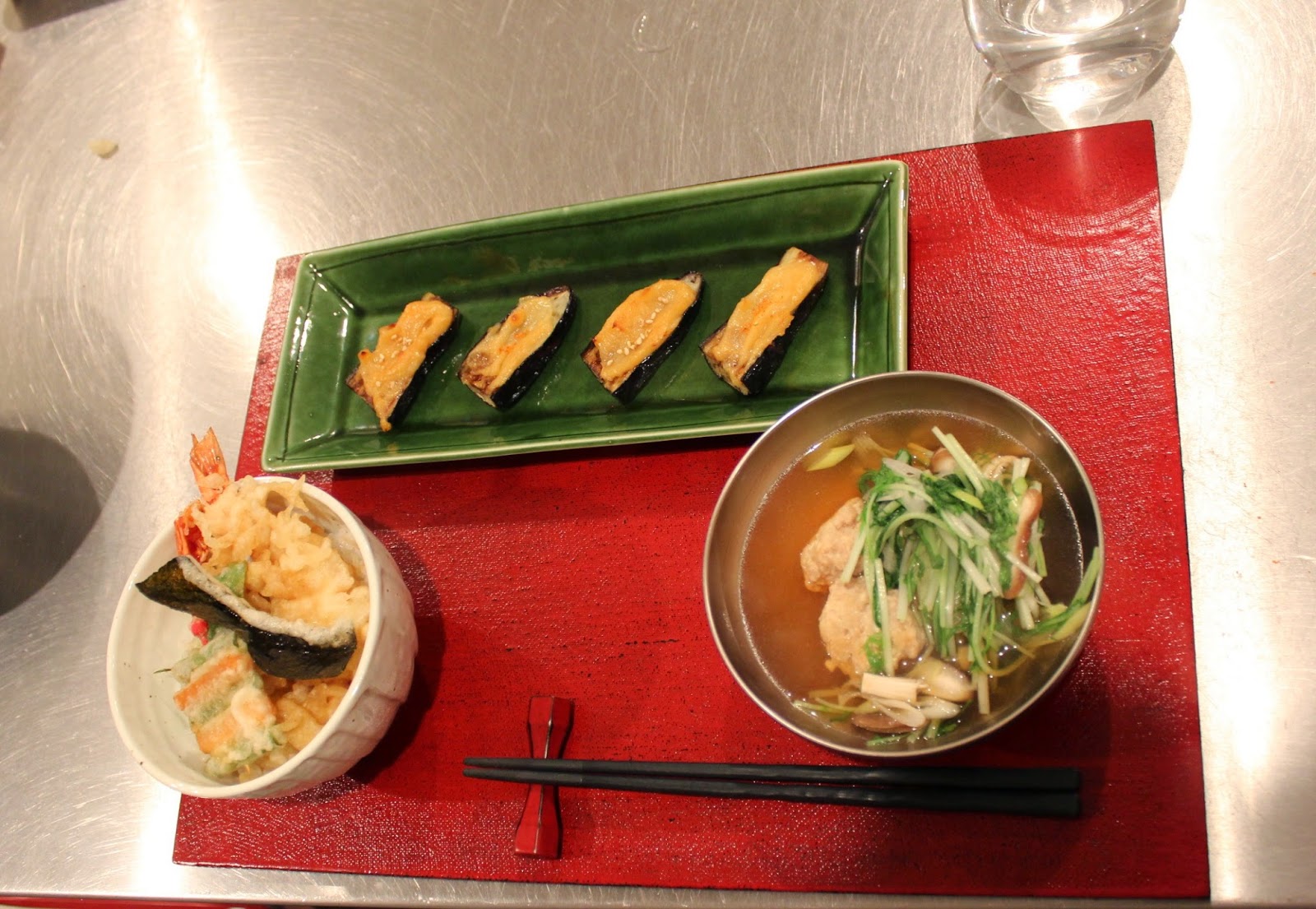Hot and humid summer is over in Japan, appetite returns to enjoy cooking!
Bashi selected delicious menus for our Autumn cooking lesson:
Eggplant Dengaku, Tendon and Nabé of chicken dumpling and Mizuna.
Bashi shows how to prepare the ingredients first
Then students turn to try Bashi's instruction
Idea from the student to use fork, instead of a bamboo skewer we use often in Japan, to stab the cut surface of the eggplant - how useful :D
Bashi gives professional tips to make delicious shrimp Tempura
Here is the secret to make straight shrimp Tempura
Move on to cook the eggplants
Bashi gives cooking tips, how to make delicious Dengaku miso sauce
Now time to apply the Dengaku miso sauce on the eggplants
Rice for Tendon is cooked in Bashi's favorite rice cooker
Chicken dumpling ingredients need to be mixed well with hands
Bashi shows how to form chicken balls with 2 spoons
Cooking time is a fun time ;-)
When chicken dumplings floats to the top, add the mixed vegetables
Making the batter correctly is important to make delicious Tempura
Very interesting tips about frying the shrimp like a pro!
If you are not used to chopsticks, you can use tong instead ;-)
Everyone tries frying Tempura to practice what they have just learnt
Look how beautiful they are cooked! Bravo everyone!!
The beautiful presentation of food is an elemental component of Japanese cooking, instructs Bashi showing how to serve on the dishes.
Everyone is getting hungry, almost there!
And finally Itadakimasu (いただきます)!!
Dengaku miso sauce is also recommended for tofu, arum root and beef, instead of eggplants. Nabé of chicken dumpling and mizuna was the most popular dish among the menus we learnt today. Hoping that students will cook by themselves at home soon, we look forward to the reunion at our next lesson :-)
Go back to Omotenashi Cuisine.





















































